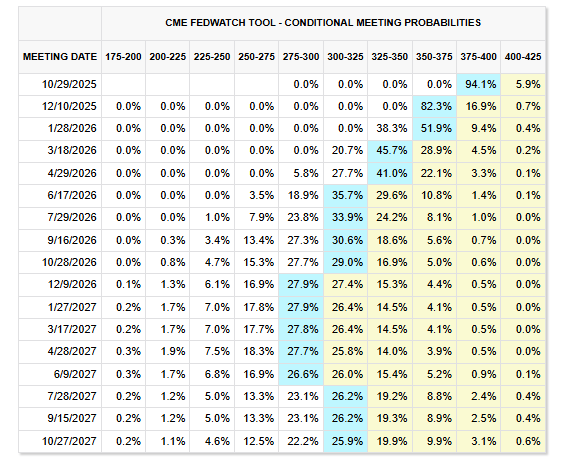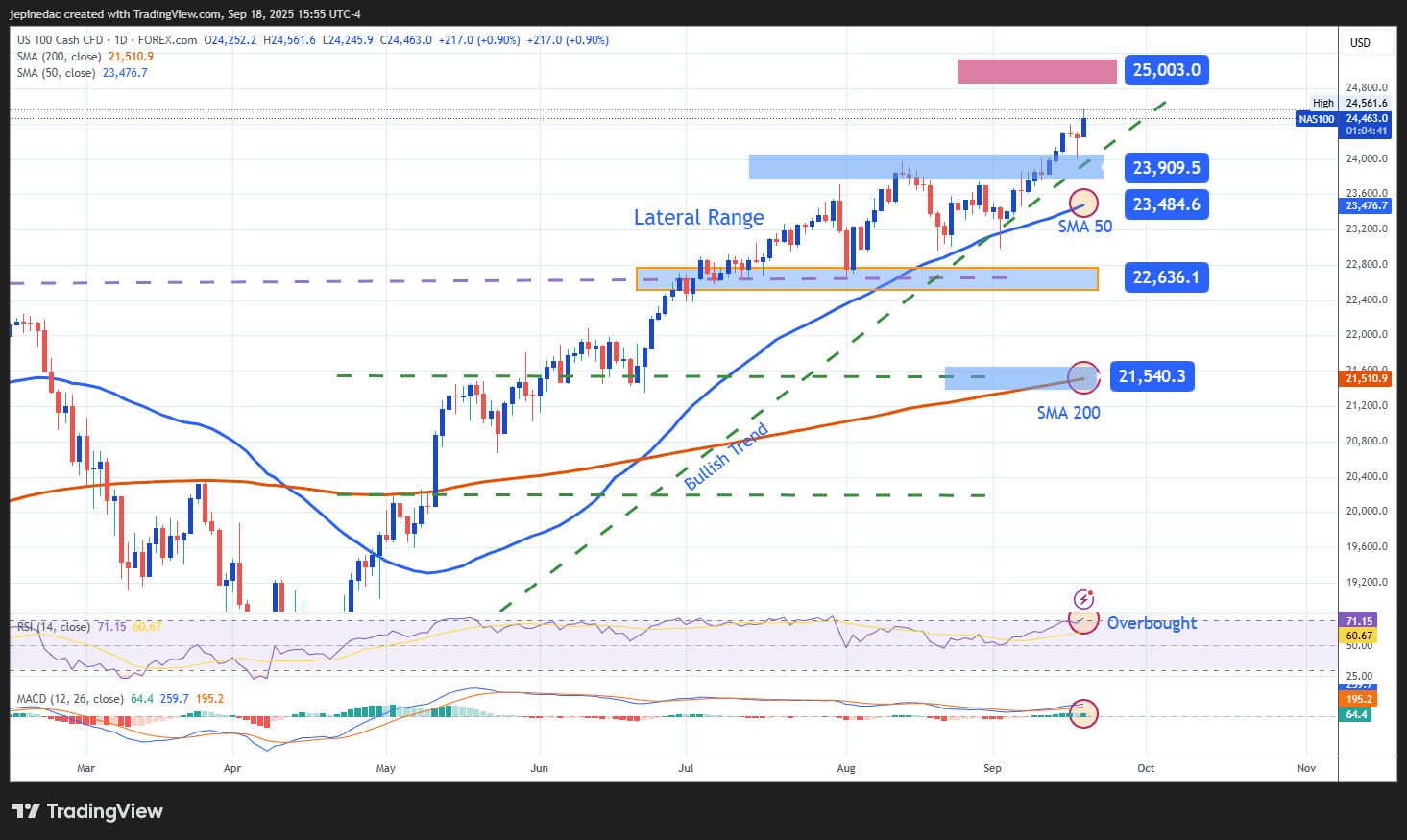Nasdaq 100 Forecast The Index Hits New Highs After Fed Comments
September 17, 2025 23:07The Nasdaq 100 has gained more than 1.7% over the last four trading sessions, maintaining a bullish bias as part of the long upward trend observed in recent months. Buying pressure has remained solid following the Federal Reserve’s comments yesterday, which highlighted that the central bank could continue pursuing a strategy to support the economy. This boosted market confidence and reinforced the idea that Nasdaq could sustain steady buying momentum in the coming sessions.
Fed Effect?
In yesterday’s decision, the Fed cut its interest rate by 0.25%, bringing it into a range of 4.00% to 4.25%. In the comments that followed, officials emphasized that the measure was intended as a risk management strategy in response to signs of weakness in the labor market, where employment growth has slowed and could weigh on economic activity in the short term.
It was also noted that additional cuts could come before the end of the year as part of a strategy to lift the economy. These expectations are already reflected in CME Group probabilities: for the October 29 meeting, there is a 94.1% probability of another 0.25% cut, and for the December 10 meeting, the probability stands at 82.3%. Together, this reinforces that the lower interest rate outlook that emerged from yesterday’s decision is here to stay, at least through the remainder of the year.

Source: CMEGROUP
In this context, Nasdaq has found fuel to sustain its bullish bias. A lower rate environment implies more accessible credit conditions, which stimulates consumption and investment. In addition, expectations for the year-end season point to a rebound in revenues for major technology companies, boosting short-term confidence. As long as the outlook for cuts remains unchanged, buying pressure could continue to dominate Nasdaq 100.
Can Confidence Hold?
Although short-term confidence has improved after the Fed’s decision, the long-term picture remains mixed. According to the AAII investor sentiment survey, 41.7% of participants identify as bullish, 16.0% are neutral, and 42.4% are bearish regarding the stock market’s performance over the next six months. These figures reveal an important divergence: while short-term optimism is supporting the rally, structural doubts remain about the durability of the trend.

Source: AAII
This presents a challenge for overall confidence in the index. If pessimism continues to be significant, it could become an obstacle for current bullish moves. In such a case, the risk of notable selling pressure in the long term would rise, particularly if investors perceive the Nasdaq as entering an overheated zone.
Nasdaq 100 Technical Forecast

Source: StoneX, Tradingview
- Uptrend remains intact: Since early April, the Nasdaq has maintained a solid bullish trend, with buying impulses clearly dominating. For now, there are no technical signs of a major reversal. If buying pressure continues, the index could approach the 25,000-point level in the short term.
- RSI: The RSI remains above 70, in overbought territory. This reflects the speed of the recent advance and indicates a bullish imbalance, opening the possibility of short-term technical corrections.
- MACD: The MACD continues to show bullish strength, with its histogram advancing above zero. This confirms that short-term moving averages maintain a positive bias, supporting ongoing buying pressure.
Key Levels:
- 25,000 points – Major Resistance: A key psychological level in the absence of historical references. A sustained breakout above would consolidate a more aggressive bullish trend.
- 23,909 points – Nearby Support: A recent neutrality zone corresponding to previous weekly highs. Now serves as an important support against potential corrections.
- 23,484 points – Key Support: Linked to the 50-period moving average, this is the most critical short-term support level. A break below would put the uptrend at risk and open the door to a stronger bearish bias.
Written by Julian Pineda, CFA – Market Analyst
Follow him: @julianpineda25
